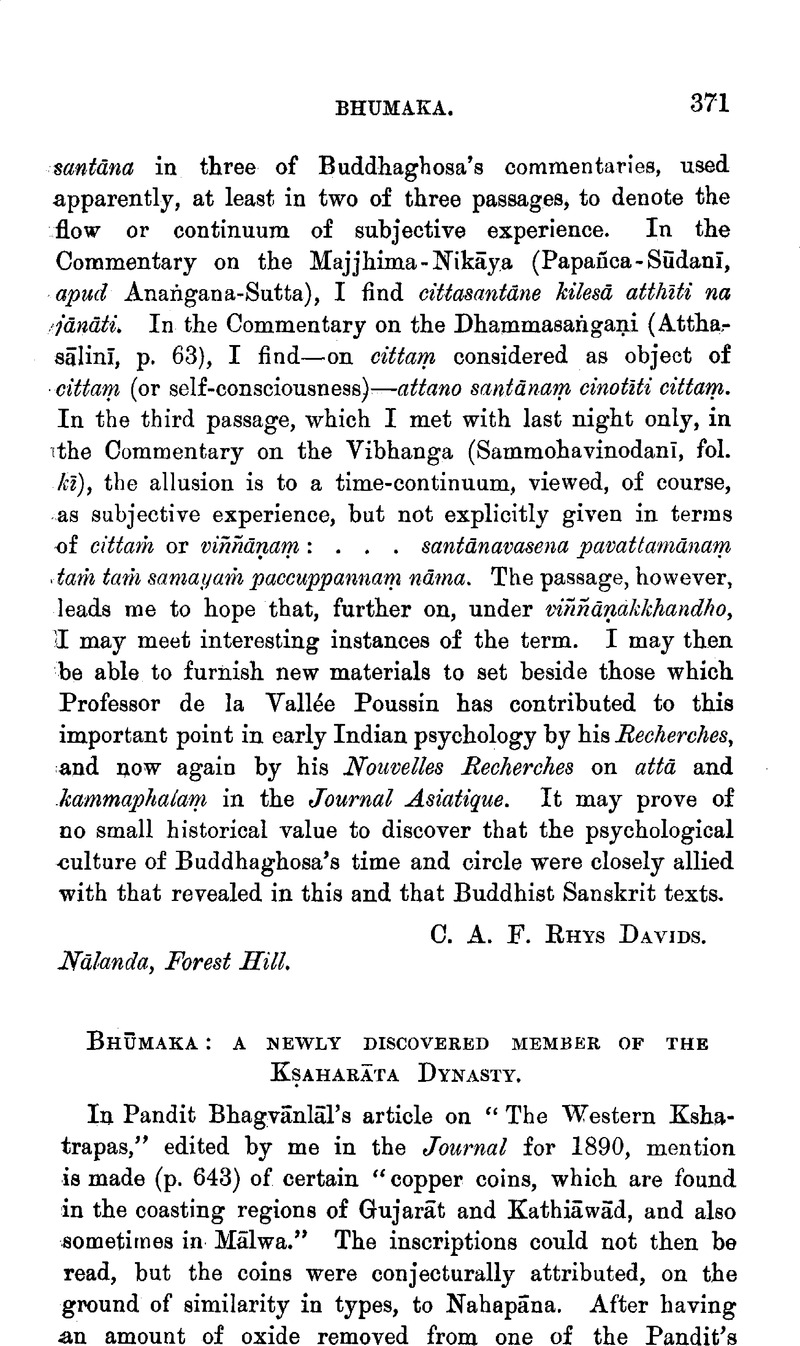No CrossRef data available.
Article contents
Bhūmaka : a newly discovered member of the Kṣaharāta Dynasty
Published online by Cambridge University Press: 15 March 2011
Abstract

- Type
- Other
- Information
- Copyright
- Copyright © The Royal Asiatic Society 1904
References
page 372 note 1 The dot, or small circle, which is to be seen on well-preserved specimens between the arrow and the thunderbolt must, I think, be intended to represent a discus. It is seen very clearly on the silver coins of Nahapāna, on some of the lead and billon coins of the Andhras (v. Smith, V. A., Z.D.M.G., 1903, p. 12)Google Scholar, and on some of the coins of the Scythic princes of Northern India (v. inf., p. 373, note 1).
page 372 note 2 For this dynasty, which seems to be the result of some sort of alliance between the Parthian (Pahlava) dynasty of Vonones and the Śaka dynasty of Manes, v. my Indian Coins, §§ 30, 31.
page 373 note 1 Gardner, B.M. Cat., Greek and Scythic Kings, etc., p. 102, No. 5, pl. xxii, 4. The circular symbol is no doubt intended to represent a discus.
page 373 note 2 J.R.A.S., 1899, p. 372.
page 373 note 3 Ibid., p. 377. Is it possible that the form dāman, which is so characteristic of their names, can be simply a Hinduised representative of the Pahlava or Śaka dama seen in ‘ Spalaga-dama’ ?
page 373 note 4 J.R.A.S., 1890, p. 642.
page 373 note 5 Journ. As., 1897 (sér. ix, tome x), p. 120.
page 374 note 1 Bhagvānlāl, Pandit, in Bombay Gazetteer, vol. xvi (Nāsik), p. 618Google Scholar, wrote: “ This much seems almost certain, that the overlord or founder of the Kshatrapas was one Vonones, who was either a Parthian king or a Parthian adventurer.” This is quite possible ; but I do not think it possible that (to continue the Pandit's statement) “the date on Kshatrapa coins and inscriptions is of this Parthian overlord.” It seems to me certain that the Śaka era is used both by Nahapāna and the succeeding family of Caṣṭana; and the date of Vonones cannot be so late as 78 A.D.




